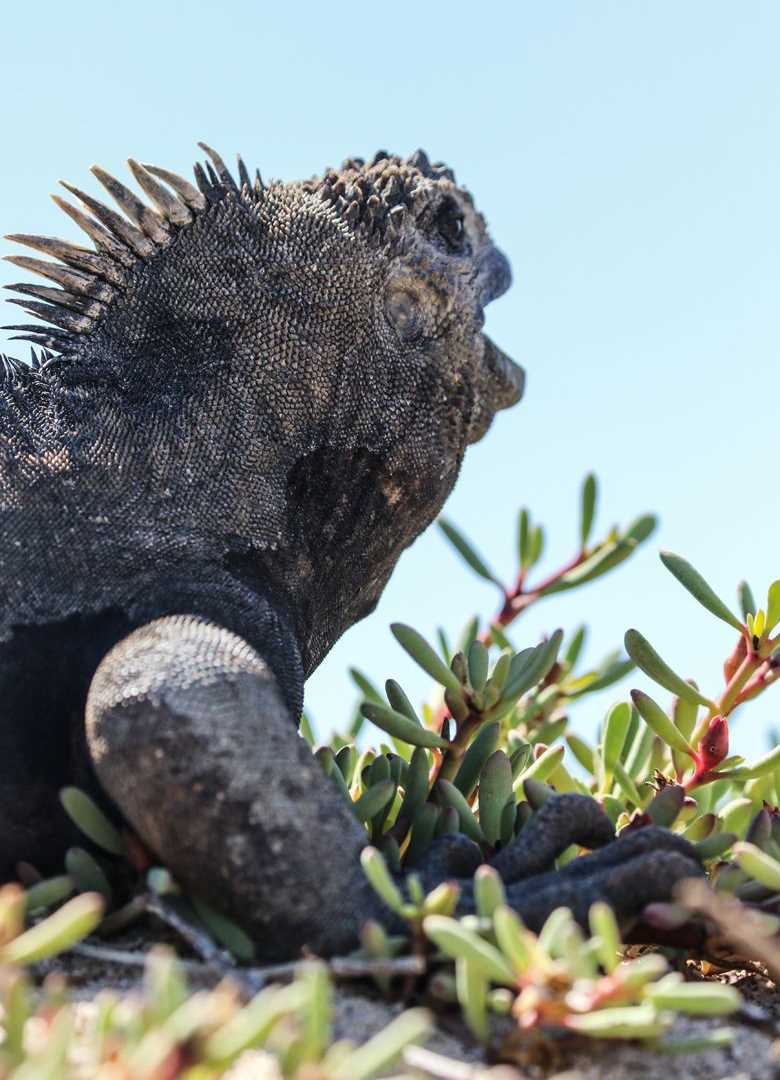Today we navigated towards the uninhabited side of Santa Cruz Island. Some of us went on a pre-breakfast outing to explore a visitor site known as Dragon Hill. After a dry landing, we walked further inland to find the nesting grounds and natural habitat of the Galapagos land iguanas. A couple of shore birds were spotted at a coastal brackish water lagoon, such as black-necked stilts and least sandpipers.
The morning light was perfect for photography, and the wildlife encounters increased as we explored the incense tree forest within the site. We finally were lucky to spot five land iguanas under the shrubs. Their scales are a yellowish golden color and camouflage well with their surroundings, so we had to look carefully for them. These iguanas are endemic reptiles to the Galapagos and are found naturally on six different islands of the enchanted archipelago.
After an incredible outing with golden dragons and a variety of native and endemic birds, we returned to National Geographic Endeavour ll to suit up for snorkeling around Guy Fawkes Islet. We spotted a large variety of marine invertebrates and some schools of yellow-tailed razor surgeon fishes, a couple of Galapagos sea lions, and large schools of back-stripped salemas which serve as food for sea lions.
We also had an incredible Ecuadorian buffet lunch, where we learned about different flavors and ingredients of this amazing country. After lunch, we circumnavigated Daphne Major Islet, a place with high scientific value after a couple of British scientists known as Peter and Rosemary Grant studied Darwin finches on this island for several years. Their studies led to great work on evolutionary biology discoveries on this species of land birds. We had a bar set up on the top deck, and an incredible sunset to enjoy, as we closed another spectacular day in the Galapagos.







